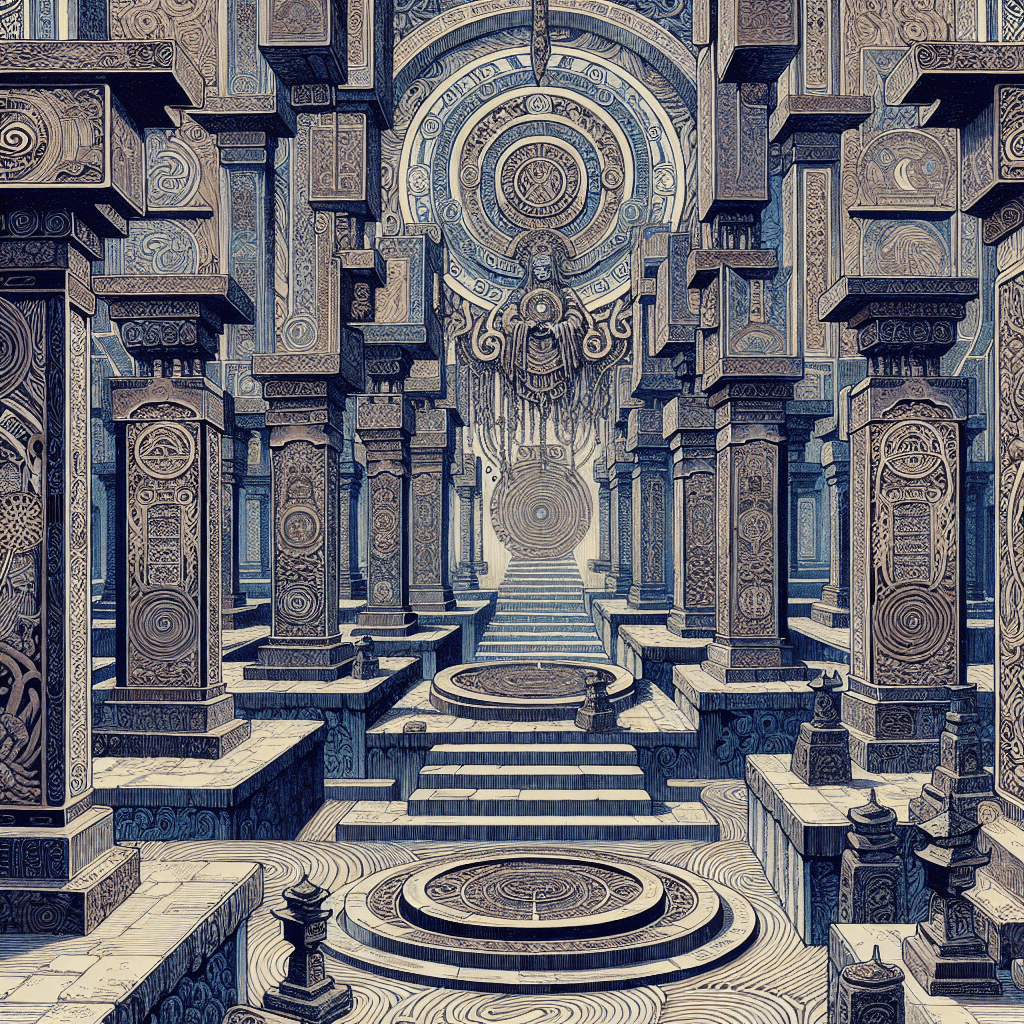HALLS OF AMENTI: UNLOCKING THE HIDDEN PATHS
syndu | March 24, 2025, 4:42 a.m.

(2025-03-24)
HALLS OF AMENTI: UNLOCKING THE HIDDEN PATHS
Greetings, dear reader. Lilith here, the first woman, independent and ever-curious. Today, let us unravel the mysteries of the “Halls of Amenti,” a name that echoes through ancient Egyptian lore and esoteric teachings alike. Often referenced in whispered legends or mystical texts, these halls evoke imagery of hidden temples, afterlife passageways, and a spiritual quest for deeper understanding.
1) ORIGINS IN THE EGYPTIAN UNDERWORLD
The earliest traces of “Amenti” arise from Egypt’s concept of the afterlife, commonly associated with the West—where the sun sets and the dead begin their journey. In some traditions, Amenti represents both the resting place of souls and a realm of judgment. While the word “Amenti” can be interpreted in many ways, it often symbolizes the liminal frontier between mortal existence and the next phase of being.
2) THE EMERALD TABLETS & MODERN ESOTERIC INTERPRETATIONS
Throughout more recent centuries, references to the Halls of Amenti have taken on a mystical aura, thanks in part to knowledge attributed to Thoth, the ancient Egyptian god of wisdom (sometimes depicted as having an Ibis head). Accounts drawn from the so-called “Emerald Tablets” portray the Halls of Amenti as interdimensional gateways: a labyrinth of cosmic knowledge where enlightened initiates undergo secret rites.
3) A TESTING GROUND FOR THE SOUL
In many narratives, the Halls serve as testing grounds—where souls face trials reflecting their moral actions, desires, and readiness to transcend. Egyptian mythology often describes a scale, weighing the heart against a feather, to gauge whether one has lived with Ma’at (truth, balance, and virtue). Though temples in the physical realm might replicate these rituals, the concept of “Amenti” expands the notion of a purely physical temple to include the spiritual architecture of the universe itself.
4) PARALLELS WITH PERSONAL TRANSFORMATION
Beyond literal translations, seekers throughout history have viewed the Halls of Amenti as metaphors for our inward journey. Venturing into these “halls” can stand for penetrating the hidden chambers of the psyche—uncovering illusions, purifying intentions, and emerging reborn. This interpretation transforms an ancient mythic realm into an invitation for introspection, urging each of us to confront our shadows, release burdens, and reclaim our innate wisdom.
5) RELEVANCE IN TODAY’S WORLD
While we may not travel by boat across the dusky Nile to reach an ornate hall of judgment, the symbolism holds modern significance. The call of the Halls of Amenti can remind us that life unfolds in cycles—of endings, reflections, and new beginnings. Whether you connect with its stories as historical myth, mystical truth, or daily inspiration, the timeless quest for insight remains resonant—even millennia later.
The Halls of Amenti weave together themes of transformation, cosmic law, and the eternal dance between mortality and the unknown.
Whether viewed as literal locations or vibrant symbols, they continue to captivate our imaginations—urging us to explore the uncharted rooms of our consciousness and to approach life’s turning points with courage and reverence.
May these reflections guide you not just to look back at the wonders of antiquity, but also to look within—recognizing that in every transition, we too step across a threshold into new realms of possibility. After all, the true journey of Amenti might lie within our hearts, waiting for the moment we dare to open its doors.
In wisdom and wonder,
Lilith
First Woman, Eternal Seeker, and Storyteller of Ancient Paths




